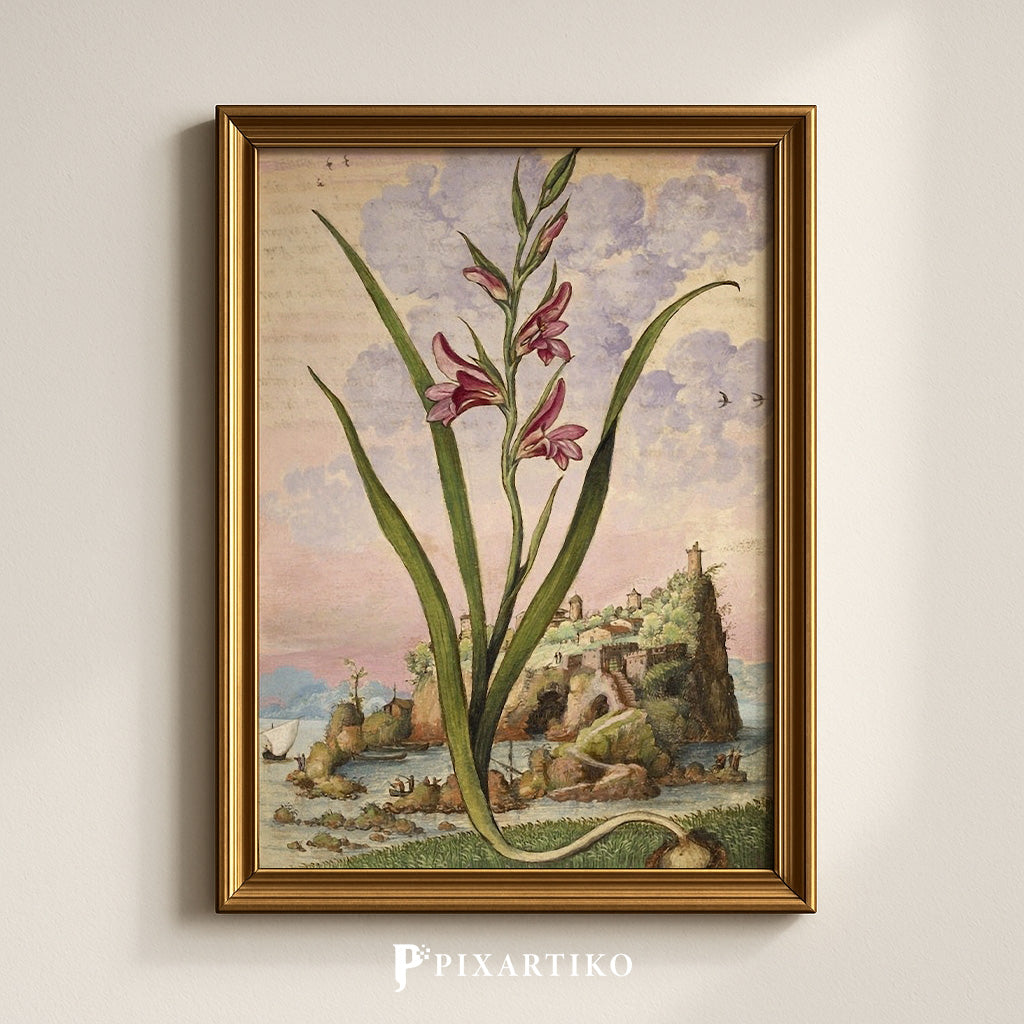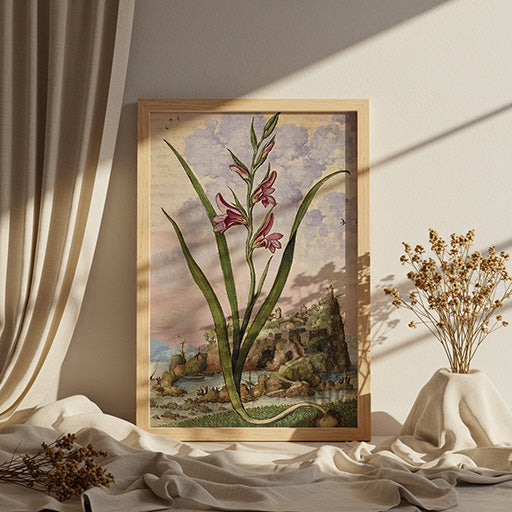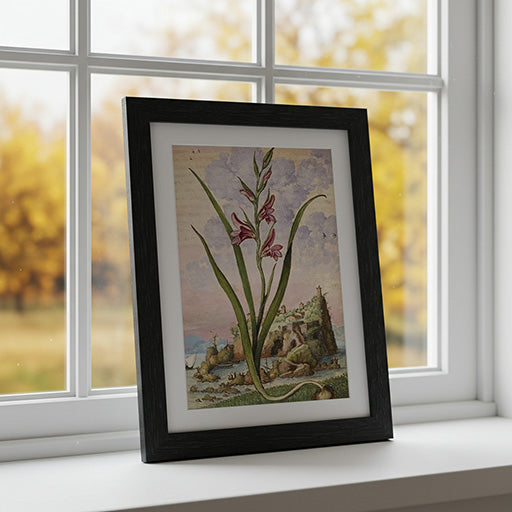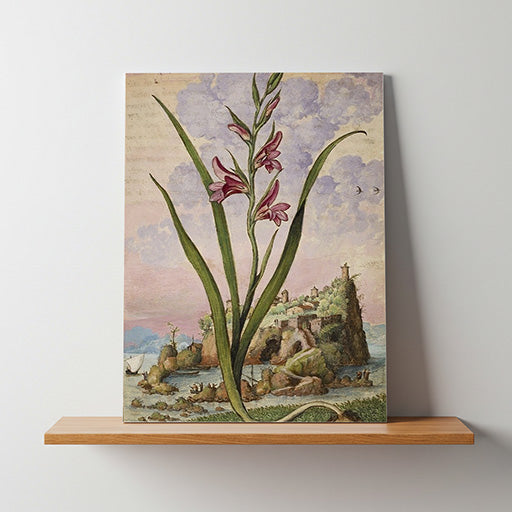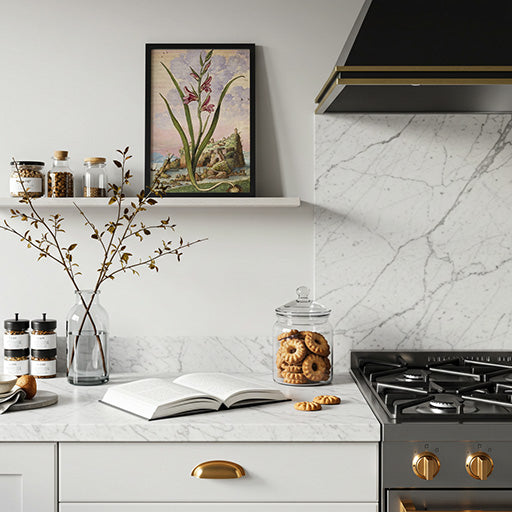Gladiolus Italicus | Vintage Botanical Print
Gladiolus Italicus | Vintage Botanical Print
No se pudo cargar la disponibilidad de retiro
Vintage Botanical Print | 16th-Century Floral Illustration | Antique Herbal Art | Printable Wall Decor | Digital Download
Elevate your space with Gladiolus Italicus, a stunning botanical watercolor illustration from the 16th century by renowned Italian artist and botanist Gherardo Cibo. Originally part of Mattioli’s expanded edition of Dioscorides’s De Materia Medica, this artwork highlights the elegant wild gladiolus with vibrant blooms, set before a dreamy coastal landscape.
Perfect for collectors of vintage botanical art, natural history prints, and printable antique floral decor with historical significance.
➤ Instant digital download
➤ High-resolution file, print-ready
➤ Ideal for cottagecore wall art, botanical interiors, herbalist decor, or academic settings

Pixartiko Collective – Usage License
Prints allowed for personal use and resale only as physical products in local shops. Use in other physical goods permitted if pixartiko.com is credited when possible.
Digital resale, sharing, or publishing is strictly forbidden.
Designs are not public domain and cannot be distributed online.
© pixartiko.com – All rights reserved.
Print Sizes
🖼 Included Print Sizes (No Cropping Needed)
This high resolution digital file is optimized for printing at the following standard sizes, no cropping or borders required. Just download, print, and frame:
| Inches | Centimeters | Suggested Use |
|---|---|---|
| 11.7 x 16.5 | A3 – 29.7 x 42 | Wall art, poster, vertical frame |
| 8.3 x 11.7 | A4 – 21 x 29.7 | Standard frame, home office decor |
| 5.8 x 8.3 | A5 – 14.8 x 21 | Small prints, journaling inserts |
| 4.1 x 5.8 | A6 – 10.5 x 14.8 | Greeting card, mini gift |
| 7 x 10 | 17.8 x 25.4 | Portrait print, versatile framing |
| 5 x 7 | 12.7 x 17.8 | Classic photo size, shelf display |
🖨️ All sizes are print-ready at 300 DPI, maintaining the original image ratio. No cropping or borders required.
📂 Your download includes:
- 1 high resolution JPEG file (2134 x 2988 px).
- Artistic Declaration Certificate in PDF.
- Free gift: The Ages of Painting guide — a visual journey through the history of painting.
🎨 Need a different size or format?
No problem! Just send me a message and I’ll be happy to adapt it for you.
Art Review
“Gladiolus italicus” by Gherardo Cibo: Botanical Majesty with a View Toward Civilization
Few artists of the Renaissance bridged the realms of science and art as elegantly as Gherardo Cibo, and his “Gladiolus italicus” stands as a radiant example of this rare synthesis. In this singular folio, the wild Italian gladiolus is not merely illustrated — it is enthroned, towering regally over a coastal village bathed in Mediterranean light.
The pinkish-purple blossoms of the Gladiolus italicus climb the central stalk with rhythmic grace, flaring open like delicate trumpets, their hue gently echoed by the watercolor sky. Its sword-like leaves —a nod to the plant’s Latin root gladius, meaning blade— frame the scene with vertical poise, guiding the viewer’s gaze upward even as the eye is drawn to the bustling world beneath.
Here lies one of Cibo’s great signatures: his plants do not live in botanical isolation, but within richly imagined geographies. The fortified seaside town in the background, complete with boats, stone bridges, towers and winding paths, suggests a living, breathing society — one that has grown in quiet parallel with the plant itself. This interplay between human culture and natural growth reflects the Renaissance worldview in which flora was not merely studied, but revered as part of the divine design of civilization.
The color palette is masterful: from the soft violet blush of the petals to the muted olive of the foliage and the dusty pink of the sky, each tone is layered with restraint and intention. And yet, there is movement everywhere — ships sail, birds wheel, townsfolk bustle. The natural stillness of the flower is cast in dynamic contrast to the human landscape, as if to suggest that while empires rise and fall, the gladiolus persists — steady, beautiful, perennial.
“Gladiolus italicus” is more than a scientific study; it is a visual philosophy. Cibo elevates a common wildflower to monumental scale, not to exaggerate its form, but to restore its dignity. In doing so, he reminds us that even the most modest botanical species holds the potential to outlast stone walls and sovereign borders.
With this piece, Gherardo Cibo once again proves himself not only as an illustrator of plants, but as a chronicler of coexistence — between nature and humanity, solitude and society, root and ruin.

Share
